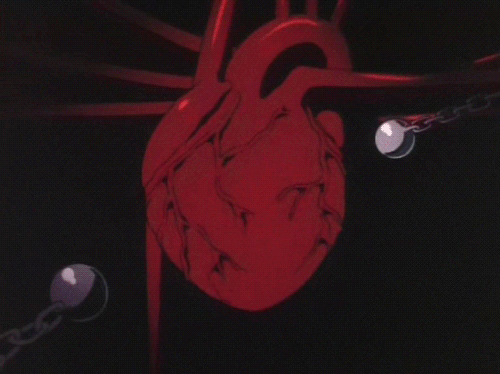Spiral Galaxies From Webb & Hubble: NGC 1566 4303 3351




Spiral Galaxies from Webb & Hubble: NGC 1566 4303 3351
More Posts from Wovy-lazuli and Others


Atlantic Royal Flycatcher (Onychorhynchus swainsoni), male with crest displayed, family Tityridae, order Passeriformes, endemic to southeastern Brazil
photograph by Daniel Alfenas
This Brazilian frog might be the first pollinating amphibian known to science
Nectar-loving tree frog likely moves pollen from flower to flower

The creamy fruit and nectar-rich flowers of the milk fruit tree are irresistible to Xenohyla truncata, a tree frog native to Brazil. On warm nights, the dusky-colored frogs take to the trees en masse, jostling one another for a chance to nibble the fruit and slurp the nectar. In the process, the frogs become covered in sticky pollen grains—and might inadvertently pollinate the plants, too. It’s the first time a frog—or any amphibian—has been observed pollinating a plant, researchers reported last month in Food Webs.
Scientists long thought only insects and birds served as pollinators, but research has revealed that some reptiles and mammals are more than up to the task. Now, scientists must consider whether amphibians are also capable of getting the job done. It’s likely that the nectar-loving frogs, also known as Izecksohn’s Brazilian tree frogs, are transferring pollen as they move from flower to flower, the authors say. But more research is needed, they add, to confirm that frogs have joined the planet’s pantheon of pollinators.
Source.




Honestly, GOSH THIS IS WONDERFULL!!
There is bacteria and fungi at left and some fern at right
But tell me, do you want to learn more? If yes, i can explain the subject even more😊
-
 annoyinglyeclecticruins reblogged this · 1 month ago
annoyinglyeclecticruins reblogged this · 1 month ago -
 annoyinglyeclecticruins liked this · 1 month ago
annoyinglyeclecticruins liked this · 1 month ago -
 mitten-the-kitten liked this · 2 months ago
mitten-the-kitten liked this · 2 months ago -
 y2ksnowglobe reblogged this · 2 months ago
y2ksnowglobe reblogged this · 2 months ago -
 justafreeoldsoul liked this · 2 months ago
justafreeoldsoul liked this · 2 months ago -
 anndrag0n liked this · 3 months ago
anndrag0n liked this · 3 months ago -
 trueankhatm liked this · 3 months ago
trueankhatm liked this · 3 months ago -
 sense-of-sight reblogged this · 3 months ago
sense-of-sight reblogged this · 3 months ago -
 vergilbeket93 liked this · 4 months ago
vergilbeket93 liked this · 4 months ago -
 anon-renaissance-man reblogged this · 5 months ago
anon-renaissance-man reblogged this · 5 months ago -
 anon-renaissance-man liked this · 7 months ago
anon-renaissance-man liked this · 7 months ago -
 gomiusa liked this · 9 months ago
gomiusa liked this · 9 months ago -
 txpuke liked this · 9 months ago
txpuke liked this · 9 months ago -
 two-fxce reblogged this · 9 months ago
two-fxce reblogged this · 9 months ago -
 curiokhan0113 liked this · 9 months ago
curiokhan0113 liked this · 9 months ago -
 macmurphy33 liked this · 9 months ago
macmurphy33 liked this · 9 months ago -
 satedanfire reblogged this · 9 months ago
satedanfire reblogged this · 9 months ago -
 satedanfire liked this · 9 months ago
satedanfire liked this · 9 months ago -
 thehonestlyleftbouquet liked this · 9 months ago
thehonestlyleftbouquet liked this · 9 months ago -
 astralwashboard reblogged this · 9 months ago
astralwashboard reblogged this · 9 months ago -
 nilti-luck reblogged this · 9 months ago
nilti-luck reblogged this · 9 months ago -
 nilti-luck liked this · 9 months ago
nilti-luck liked this · 9 months ago -
 chubbymonstah reblogged this · 10 months ago
chubbymonstah reblogged this · 10 months ago -
 sweetheart-ninja liked this · 10 months ago
sweetheart-ninja liked this · 10 months ago -
 casthecryptid reblogged this · 10 months ago
casthecryptid reblogged this · 10 months ago -
 casthecryptid liked this · 10 months ago
casthecryptid liked this · 10 months ago -
 mckitterick reblogged this · 10 months ago
mckitterick reblogged this · 10 months ago -
 cbrode75 liked this · 10 months ago
cbrode75 liked this · 10 months ago -
 amandac0re liked this · 10 months ago
amandac0re liked this · 10 months ago -
 twilightmaundering reblogged this · 10 months ago
twilightmaundering reblogged this · 10 months ago -
 webweasel liked this · 10 months ago
webweasel liked this · 10 months ago -
 poolboydivision reblogged this · 10 months ago
poolboydivision reblogged this · 10 months ago -
 poolboydivision liked this · 10 months ago
poolboydivision liked this · 10 months ago -
 the-space-princess reblogged this · 10 months ago
the-space-princess reblogged this · 10 months ago -
 adastra-sf reblogged this · 10 months ago
adastra-sf reblogged this · 10 months ago -
 mckitterick liked this · 10 months ago
mckitterick liked this · 10 months ago -
 theladygrey liked this · 10 months ago
theladygrey liked this · 10 months ago -
 sunflowersforthemoon reblogged this · 10 months ago
sunflowersforthemoon reblogged this · 10 months ago -
 rynozi reblogged this · 10 months ago
rynozi reblogged this · 10 months ago -
 callsigndreadfrost liked this · 10 months ago
callsigndreadfrost liked this · 10 months ago -
 platinumalldayeveryday liked this · 10 months ago
platinumalldayeveryday liked this · 10 months ago -
 entropic-principle reblogged this · 10 months ago
entropic-principle reblogged this · 10 months ago -
 the-space-princess liked this · 10 months ago
the-space-princess liked this · 10 months ago -
 ravioliwings reblogged this · 10 months ago
ravioliwings reblogged this · 10 months ago -
 ravioliwings liked this · 10 months ago
ravioliwings liked this · 10 months ago -
 alertbooty liked this · 10 months ago
alertbooty liked this · 10 months ago

21 years old biology student. And yes, i have an addiction to philosophy and coffee. instagram: @wovy_lazuli
123 posts








